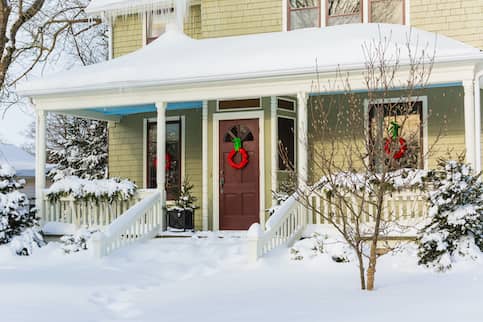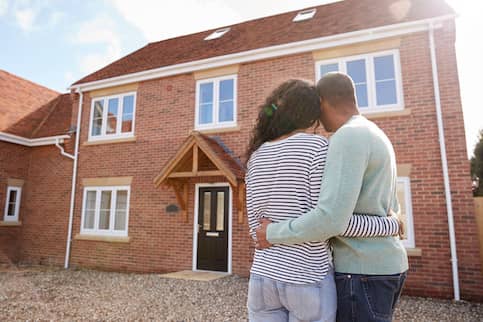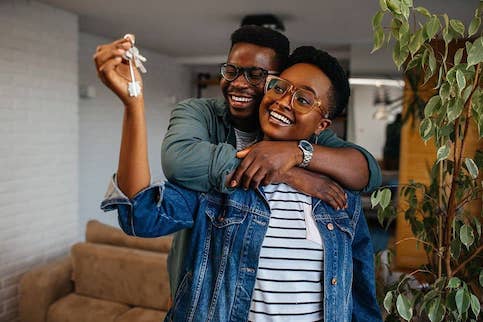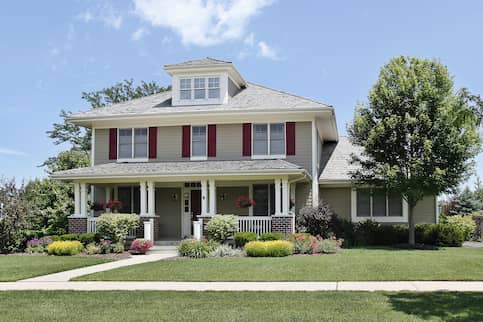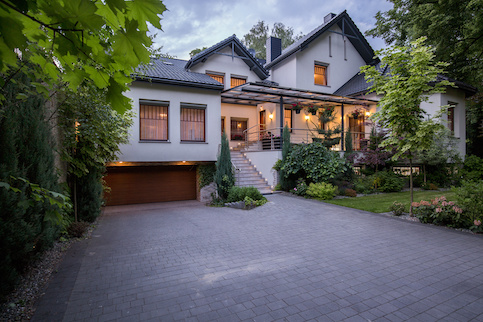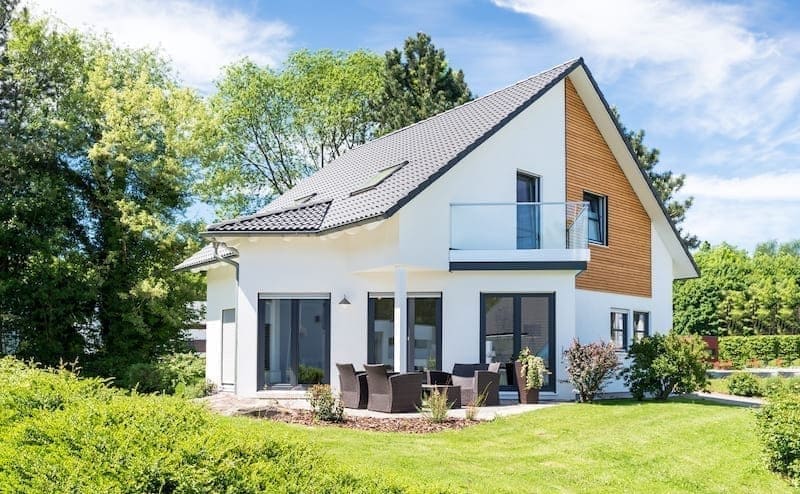Between the down payment, closing costs and preparing for the unexpected, it can be hard to know exactly how much money you need to buy a house. Below, you’ll learn about common expenses home buyers should prepare for and how much you’ll need to cover the necessary costs.
Key Takeaways:
- Home prices vary by region, so look at listings in the area you’re interested in to estimate how much you’ll need to pay.
- Saving up enough to afford a down payment and closing costs shows sellers you’re a serious buyer – and can save you money in the long run.
- After getting the keys, you need to pay recurring costs such as HOA fees, maintenance and utilities.
How Much Money Do I Need To Buy A House?
Most potential home buyers know the more significant expenses when buying a house: the down payment and closing costs. However, buyers might not know about smaller one-time and recurring costs. How much you need saved to buy a home depends on the home’s location, price, how much you can afford for a down payment, and how big of a mortgage you’d like to take on.
“The more you save, the better it will make your circumstances,” says Tristain O’Donnell, real estate advisor at Engel & Völkers in Atlanta. “For example, a larger down payment may help you push your budget up more” when calculating how much house you can afford.
Here’s a quick look at new home sale prices as reported by the United States Census Bureau as of the second quarter of 2024:
Home Prices By Region In 2024
| Region | Median Price | Average Price |
|---|---|---|
| Northeast | $701,500 | $957,800 |
| Midwest | $372,500 | $433,800 |
| South | $371,600 | $448,800 |
| West | $537,100 | $614,100 |
What’s Your Goal?
Buy A Home
Discover mortgage options that fit your unique financial needs.

Refinance
Refinance your mortgage to have more money for what matters.
Tap Into Equity
Use your home’s equity and unlock cash to achieve your goals.
The Upfront Costs Of Buying A House
Buying a home requires a long-term commitment to monthly expenses, but the most significant bills come due soon after the seller accepts your offer. Make room in your budget to cover these one-time upfront costs.
Earnest Money
One customary upfront cost that can protect you when purchasing a home is earnest money. Plenty can go awry after you sign a purchase and sale contract, but by depositing earnest money in an escrow account, you can show the seller your intention to follow through with the purchase.
“Earnest money is a deposit made to show the seller you’re serious about buying,” says Yancy Forsythe, Owner and Founder of Missouri Valley Homes in Carrollton, Missouri. “It typically ranges from 1% to 3% of the purchase price.”
When initiating an earnest money payment, you should establish requirements that must be met for the seller to keep your deposit. For example, if you set a contingency for the house to pass inspection and it doesn’t, you can get your deposit refunded should the home purchase fall through. However, you could lose your deposit if you fail to meet the agreement.
When you close on the sale, your earnest money deposit is applied to your down payment or closing costs.
Down Payment
Saving up a sizable down payment is one of the biggest obstacles for first-time buyers. The traditional practice of making a down payment of at least 20% of the purchase price is no longer required, though doing so prevents you from paying for private mortgage insurance. Conventional loans allow buyers to put down as little as 3%, depending on your income, credit score and debt-to-income ratio.
Loans backed by the Federal Housing Administration allow borrowers to make a down payment of 3.5% of the purchase price. FHA loans have lenient credit requirements and maximum loan amounts.
No down payment is needed for Veterans Affairs loans or U.S. Department of Agriculture loans, though those loans have specific requirements for borrowers and properties.
Here’s a chart to illustrate how these numbers when considering a $400,000 home:
Down Payment Example By Loan Type On A $400,000 Home
| Loan Type | Minimum Down Payment Requirement | Total Down Payment Cost |
|---|---|---|
| Conventional Loan | 3% | $12,000 |
| FHA Loan | 3.5% | $14,000 |
| VA Loan | 0% | $0 |
| USDA Loan | 0% | $0 |
Home Inspection
Your lender may not require a home inspection, but knowing the condition of the home you’re buying in detail is recommended.
A home inspection costs anywhere from $300 to $500 for a single-family home. While this is an additional out-of-pocket cost when buying a home, paying it now can save you thousands later or help you avoid buying a home that needs extensive repairs to be safe and habitable.
Closing Costs
Closing costs are another expense that comes with buying a house. They increase the overall total buyers need to pay at closing and may be more expensive than many people realize. Rather than one lump sum, closing costs comprise many minor expenses, often including fees for the following elements:
- Credit report
- Appraisal
- Loan origination
- Government recording
- Application
- Title insurance and title search
How much each of these fees costs varies by lender and location, but a good rule of thumb is to budget 2% to 5% of the home’s purchase price for closing costs.
For example, if you’re buying a home at $400,000 and want to be prepared for every expense, you’ll want to save up 5% of the purchase price, or an additional $20,000 on top of your down payment, for closing costs.
Prepaid Costs
In addition to closing costs, you’ll need to budget for prepaid costs. Your lender may require you to pay these expenses into an escrow account at closing. This lets the lender know you can afford the additional costs of homeownership.
Prepaid costs can include initial installment payments for:
- Property taxes. Homeowners are subject to property taxes in the municipality where they live. Take your home’s fair market value and multiply it by the property tax rate in your state; this will give you a rough idea of what you’ll owe each year in property taxes.
- Homeowners insurance. Homeowners with mortgages are required by the lender to secure the “asset” with homeowners insurance. Homeowners insurance typically includes coverage for the structure of your dwelling, as well as your personal belongings, but the total amount you’ll pay in insurance also depends on whether you opt for additional add-on coverage.
Moving Expenses
When planning to buy a home, don’t forget you need to hire movers. Those new to homeownership may not yet have many possessions and can simply pay a friend with pizza. However, moving from a furnished house may require professionals.
“Estimate moving costs by considering the distance, volume of belongings and additional services like packing,” says Forsythe. While every move is unique, he estimates the cost for local moves is $500 to $5,000, and $2,000 to $10,000 for long-distance moves.
Ready To Become A Homeowner?
Get matched with a lender that can help you find the right mortgage.
The Recurring Costs Of Homeownership
After paying all your upfront costs and closing on your home, you’ll need to be ready to afford the recurring costs. These expenses remain fairly consistent, so planning ahead will help keep your budget on track.
Mortgage Payments
Mortgage payments look and act a lot like rent payments, with the main difference being that you’re paying off a loan to a bank and building equity rather than paying a landlord. The total mortgage payment is made up of four components, often referred to as PITI:
Most lenders let you pay your mortgage either monthly or biweekly.
HOA Fees
If you live in a condo, townhome, neighborhood with common amenities, or a planned development, you can expect to pay a monthly homeowners association fee. This will be paid separately from your monthly mortgage payment.
Don’t underestimate HOA fees – they can add up and mean the difference between comfortably affording the home and a place being too expensive. For many, an HOA fee is reasonable enough since this cost covers shared perks like parking, recreation facilities, clubhouses, landscaping, trash collection and pest control.
Utilities
On average, an American family spends nearly $4,000 per year on utilities. This expense, however, varies by location. For example, electricity costs around 23.4 cents per kilowatt-hour in the more expensive Northeast, but it only costs around 15.7 cents per kWh in the more affordable South.
In addition, the usage of utilities will change depending on your environment. Homes in the South may spend more on electricity due to an increased need for air conditioning, while homes in the Midwest may use extra gas heating during the winter months.
Below are some utilities to anticipate for your budget:
- Electricity
- Natural gas
- Internet
- Cable or satellite TV
- Telephone landline
- Water
- Sewage
- Trash collection and recycling
Maintenance And Repairs
New homeowners may find it surprising that homes also need maintenance on a regular basis. A good guide is to earmark 1% to 4% of the home’s value annually for home maintenance. Anything from fixing faucet leaks and replacing the roof to eventual home upgrades would come from this budget.
Home Warranties
Not to be confused with homeowners insurance, a home warranty covers the cost of repairing or replacing home appliances and systems when needed. This would cover issues like a defective refrigerator or a worn-out washing machine that needs to be replaced. The cost would vary depending on the coverage.
Take The First Step To Buying A Home
Find a lender that will work with your unique financial situation.
6 Tips To Prepare For The Cost Of Buying A Home
Now that you know more about how much it costs to buy and own a home, you can begin preparing. These six tips will set you on the path:
- Keep an eye on your credit score. The higher your credit score, the easier it will be to secure a favorable loan. Get your free reports from the three major credit-reporting bureaus to see where you stand.
- Reduce your debts. Loan companies dislike risk. Proving you can handle money by lowering your debt-to-income ratio will make it easier to get a mortgage.
- Set up a budget. Make a plan for handling your money, considering when you intend to buy a home and what costs come with homeownership.
- Save for a down payment. The down payment is the most significant expense of the home buying process.
- Shop for a mortgage lender. To get the best mortgage, get estimates from different lenders and compare them to see which one is making the best offer.
- Get preapproved for a home loan. During preapproval, mortgage lenders take a deep dive into your finances to estimate what mortgage you’ll be eligible to receive. While this isn’t the same as getting approved for a loan, it will give you a good idea of what to expect and how you might need to adjust your finances before getting approved.
FAQ
Here are answers to common questions about how much money you need to buy a house.
The Bottom Line
So, how much do you need to buy a house? When you’re shopping for real estate, it’s easy to feel overwhelmed by all the different costs to consider. But if you do your research and plan ahead, it’s possible to figure out a budget that works for you – and stick to it.
More From Quicken Loans:
- Average Costs Of Homeownership: The Upfront, Monthly And Ongoing Expenses Of Owning A Home
- The Average Down Payment On A House, Explained
- How To Get Down Payment Assistance – A Home Buyer’s Guide
- How To Buy A House With No Money Down
- Average Mortgage Payment By City And State
- What Percentage Of Your Income Should Go To Mortgage Payments?
Victoria Araj contributed to the reporting of this article.

Michael Rosenthal
Michael Rosenthal is a writer and editor based in Los Angeles. He brings a decade's worth of experience working in finance, tech, education and entertainment. In his free time, he enjoys both table tennis and regular-size tennis.
